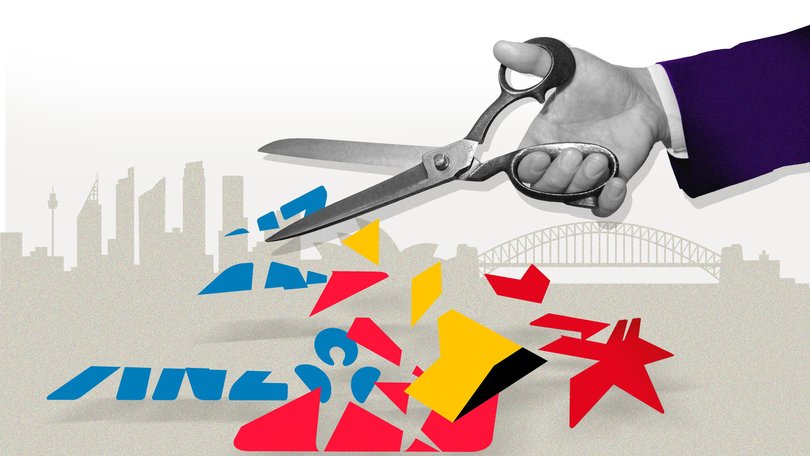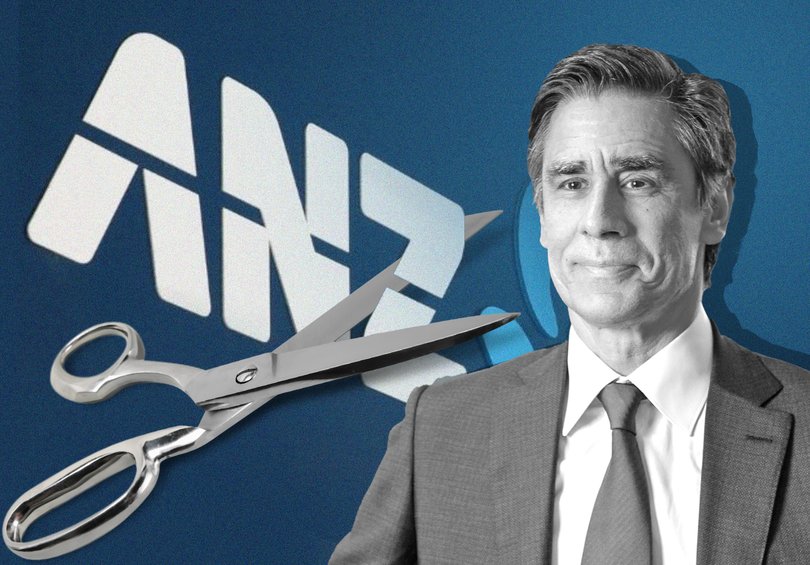Analysis: ANZ & NAB job cuts are just the start of killing season at Australia’s big banks

Australia’s banks are taking an axe to their workforces, cutting thousands of jobs in pursuit of better profits.
Just a day after ANZ said it was slashing 3500 jobs and 1000 contractors, National Australia Bank confirmed on Wednesday it was joining the cull by axing 410 jobs and shifting 127 roles to its growing operations in India and Vietnam.
Westpac is reportedly eyeing 1500 redundancies, while Commonwealth Bank has signalled its intent to also chase savings, despite backtracking on a decision to cut dozens of jobs after launching an artificial intelligence chatbot to handle customer enquiries.
Sign up to The Nightly's newsletters.
Get the first look at the digital newspaper, curated daily stories and breaking headlines delivered to your inbox.
By continuing you agree to our Terms and Privacy Policy.“This isn’t one rogue bank, it’s the whole sector driving the same agenda at the expense of workers and communities,” Financial Sector Union national president Wendy Streets railed.
And there’s likely more job cuts to come as the banks’ adoption of AI grows and bricks-and-mortar networks are trimmed back even further.
The banks are still making billions in profits a year but growing slower.
It’s more difficult to make money. Their profit margins are being squeezed by tougher competition from their biggest rivals and falling interest rates as costs for IT, cyber protection and wages increase.
The Australian Banking Association estimates the banks’ spending on IT systems and infrastructure in the past year alone at more than $30 billion.
That means the banks are looking at cutting costs elsewhere to help support earnings.
So staff are in the firing line.
It’s uncontrollable. It’s happening
And it’s no surprise that Australia’s newest banking chief executive, ANZ’s Nuno Matos, is leading the charge.
New bosses often have a licence to clear the decks on arrival, shaking up management teams, restructuring businesses and cutting workforces to deliver the companies they want to run.
Mr Matos has been particularly aggressive. The Lisbon-born banker turning ANZ upside down with a management style that has clearly aggrieved many staff, with employees posting on the Reddit social media platform voicing concern over “El Nuno” and his “Nuno-geddon”.
The man himself explains that change at ANZ is inevitable if the bank is to do better for staff, customers and its shareholders.
“In today’s world, all industries, all businesses, they have to be good at one thing at least: pace,” Mr Matos told a conference in Sydney on Wednesday after the job cuts to ANZ’s 43,000-strong workforce were disclosed.
“We need to embrace the speed at which society is evolving, and it’s uncontrollable. It’s happening,” he said.
“We can’t avoid it. We can decide to be part of it or pay the consequences, right? That’s how things are going, and banking is no different.”
Mr Matos said the shake-up he’s instigated was “about simplifying the company”.
“This is about getting the basic things right in our company. It’s about avoiding duplication and reducing complexity on one hand, and on the other hand, it’s about stopping projects and initiatives that don’t align with our priorities.
“We need to do less things.”

Neither the ANZ or NAB, or any other of the other banks slashing costs, suggest the cutbacks are about boosting profits. Just like they remain reluctant to link any job cuts with the adoption of AI.
Inevitably, they say cutbacks are all about ensuring they can better serve customers.
“The environment we operate in is constantly changing and we need to have the right structures alongside the right skills and capabilities in the right locations to help us deliver for our customers,” an on-message NAB said on Wednesday.
Not surprisingly, the FSU isn’t buying it.
The union said workers face uncertainty “while profitable banks replace workers in secure jobs with offshoring and automation”.
“Banks are swinging the axe. These cuts are destructive to the people who make the banks’ success possible,” Ms Streets said.
On the other side, however, shareholders usually embrace cost-cutting, reckoning it improves productivity, adds to profits and potentially enhances dividends.
Analysts who cover ANZ, for example, put the savings from the jobs cut at between $600m and $800m.
“We think this is likely the beginning of a series of changes at ANZ as the new CEO seeks to reshape the business and significantly reduce costs,” Macquarie said.
However, Macquarie suggested further cuts by ANZ could be limited by the promise it made when buying Suncorp last year not to cut jobs at the Queensland lender before September 2027.
And AI looms large.
The banks are enthusiastic about the potential for AI to prevent scams, take over back-office work and answer customer enquiries.
They insist the deployment of AI won’t replace humans, instead staff will “partner” with the technology. A win-win, they argue.
However, there seems little doubt that the next wave of job cuts at banks is just around the corner.
